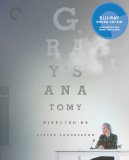| Reviews & Columns |
|
Reviews DVD TV on DVD Blu-ray 4K UHD International DVDs In Theaters Reviews by Studio Video Games Features Collector Series DVDs Easter Egg Database Interviews DVD Talk Radio Feature Articles Columns Anime Talk DVD Savant Horror DVDs The M.O.D. Squad Art House HD Talk Silent DVD
|
DVD Talk Forum |
|
|
| Resources |
|
DVD Price Search Customer Service #'s RCE Info Links |
|
Columns
|
|
|
Gray's Anatomy
The eye is the window to the story
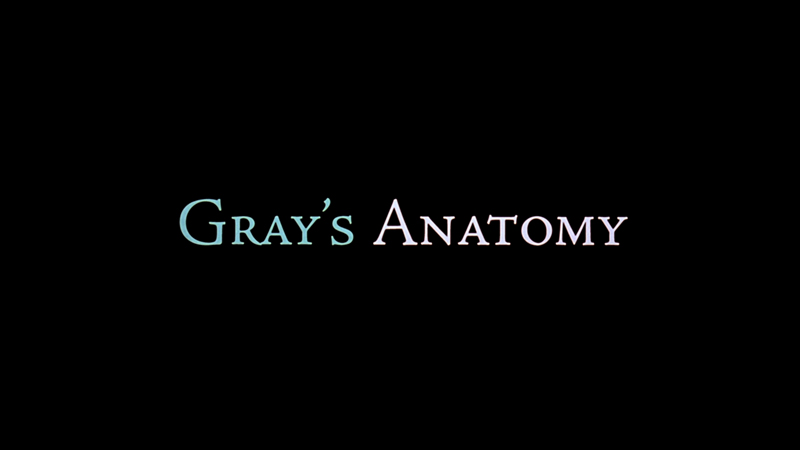
Reviewer's Bias*
Loves: The Criterion Collection, good monologues
Likes: Spalding Gray, Steven Soderbergh
Dislikes:
Hates: Anything bad involving eyes
The Movie
Thanks to a bootleg VHS tape of Gray's Anatomy I first discovered Spalding Gray in college, while a performance of his It's a Slippery Slope at Lincoln Center solidified him as my favorite monologist. A combination of intelligence and ridiculousness, Gray's monologues have been consistently enjoyable, a window into a man of simple complexity, shaped by the world around him, learning at a later age how to cope with reality and all the oddities that come with it. Considering how vivid a part of my pop-culture life Gray has been, knowing that his existence only overlapped with mine in terms of awareness for seven short years is very weird, as is the idea that most people know him only as Fran's doctor on The Nanny.
Though some consider his earlier (and more serious) Swimming to Cambodia to be his best film work, Gray's Anatomy is a far more complete work of art, thanks to the effort on both sides of the camera. Gray, telling the story of a condition that threatens to render him blind in one eye, and the efforts to stave it off, is perfection in his voice, delivery and pacing, while Steven Soderbergh, in an experimental, palette-cleansing stage before he made his mainstream mark, took some of the ideas Jonathan Demme put in place in Cambodia and filtered them through his artistry to create an outstanding visual representation and enhancement of Gray's words. Together, they crafted an experience like none other I've ever had while watching a movie, a monologue or pretty much anything else.
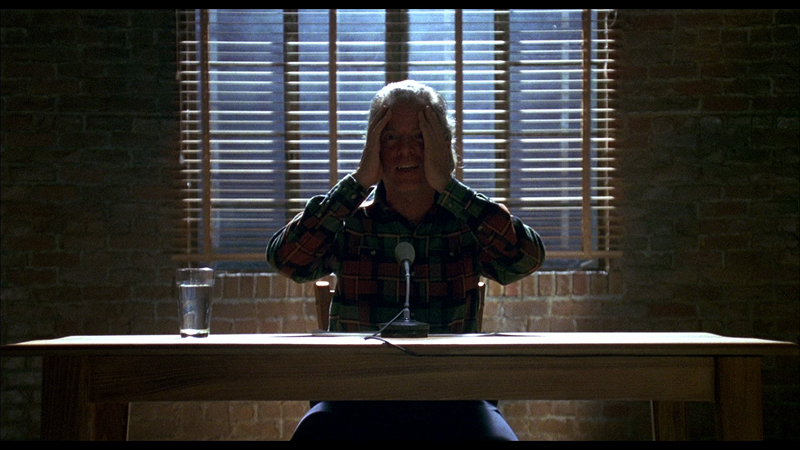
As referenced above, my ability to experience anything involving trauma to the eyes is minimal at best. Mention or show any potential injury to an eye, and a chill goes through my body, my knees go weak and my breath catches in my throat. So an entire 79 minute film dedicated to the puckering of the covering of the eye, and the possible need for surgery on said eye, is the equivalent of a horror film to me. Starting off with people, shot in stark black and white, telling awful tales of damage to their eyes, the film starts off inspiring cringes, before Gray takes his traditional seat behind a desk and begins his own story of diminished sight, and the psycho-spiritual journey through medicine and healing he takes in search of a cure. Frequently hilarious, especially when he tries an Indian sweat lodge with the aid of the near-mythical Azaria Thornbird and when he visits the office of Dr. Ron A. Ax in New Jersey, but equally thought-provoking, Gray is an amazing storyteller and a master of his own instrument.
Soderbergh is equally as masterful in presenting Gray's stories, telling the same stories around him, creating settings through props, projects and lo-fi special effects. While Demme did a nice job of making one of Gray's sit-down monologues visually interesting through effective lighting, Soderbergh made something entirely new. Perhaps one day we'll be able to share what we see inside our heads, but until then, this film is as close as we get, seeing what Gray is talking about in the air between us. Gray had an incredible gift for crafting an image with just his words and voice, but the way Soderbergh enhances and magnifies those images to make them more engaging and enveloping is astounding. Via translucent backgrounds and silhouettes, the segment where Gray shares his experience with a Filipino psychic surgeon becomes a mad crimson circus, while the visit to Dr. Ax is an acid trip. As someone who had the good fortune to see Gray perform a monologue live, I can say with no exaggeration that Gray live was a show, but this movie is an experience.
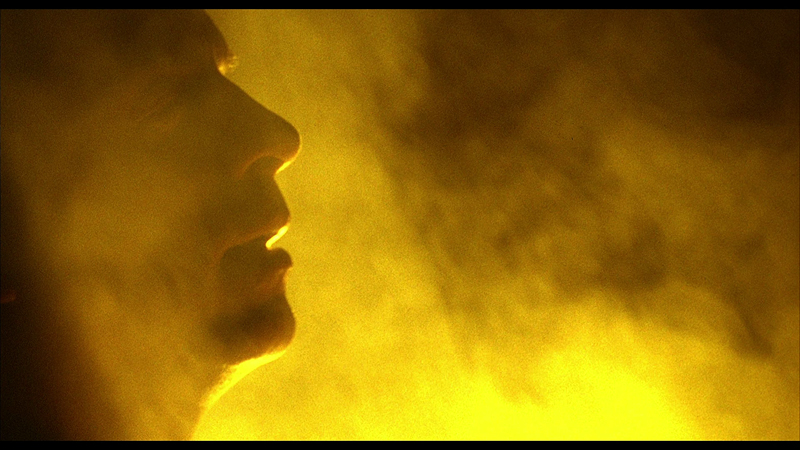
The Disc
A one-disc release in a clear, standard-width keepcase, this package includes an attractive two-sided cover, designed to coordinate with Criterion's release of And Everything is Going Fine. The Blu-Ray features a static, yet wonderfully interactive menu (this is the first Criterion Blu-Ray I've viewed, so this may be their standard, and if so, good on them.) The options include watching the film, selecting scenes (from a timeline and chapter list) and checking out the extras. There are no audio options, while subtitles are available in English SDH.
The Quality
The 1080p, AVC-encoded transfer was, as is Criterion's tradition, supervised by someone close to the production, in this case Soderbergh, and underwent a clean-up along the way, resulting in a pretty big improvement over the previous DVD. The image is solid all around, from the appropriate color reproduction to the deep black levels and a high level of fine detail. The clean-up has left basically nothing of note behind, though the black and white footage is rather noisy, a result of the way it was shot.
Per the disc's booklet, the English DTS-HD Master Audio 5.1 track on this Blu-Ray is drawn from the original 1997 audio mix, getting an upmix to surround sound. The resulting sound doesn't overdo the aural gymnastics (it is, after all, a guy telling a story), mainly existing to give additional heft to the music. Otherwise, it's a pretty straightforward presentation, keeping Gray's voice clear and center-focused, with no noticeable distortions.
The Extras
Last time out, the only extras Fox Lorber offered were some text filmographies and a trailer. The key extra this time, an entire second film essentially, is a 1982 recording of Gray's monologue A Personal History of the American Theater, in which he recounts the plays he was a part of in the 1960s. This is one of the least enjoyable of Gray's monologues, in my opinion, thanks to the structure, as Gray flips through cards with the titles of each show, and then talks about it, sharing tales of experimental theater, traveling through Europe and living with artists. As a result of the way the monologue plays out, it struggles to build momentum, and Gray is not at the height of his powers yet. No matter how good the monologue was, the straight-forward capture of the performance couldn't hold up well in comparison to the fantastic main feature.
A pair of interviews, one with Soderbergh (12:14) and one with Gray's ex-wife and collaborator Renee Shafransky (18:00) , sheds light on both Gray and the film, with Soderbergh talking about how he became involved, his approach to the concept and the challenges the film's budget presented, and Shafransky talking more about the man she knew so well. Together, they add some fine background to the package.
In one of those odd bits of collateral that Criterion tends to turn up, we get a 16:22 clip of the surgery at the center of the monologue, titled "Swimming to the Macula." As someone severely squeamish about eyes, I was surprised to find it not hard to watch. I was thinking, the footage of Dave Foley's Lasik surgery on the Same Guys, New Dresses DVD was much worse than...OH MY GOD. At about the 11 minute mark, a door to my innermost fears was kicked open and the screen exploded into horrific close-up footage of an eye WITH A NEEDLE MOVING THROUGH IT. No. No. No. No. No. No. No. No. No. No. No. No. No. No.No. No. No. No. No. No. No. No. No. No. Nononononononononono. No.
Well, let's try and wipe that nightmare away with the returning trailer for Gray's Anatomy. Amusing, but definitely a product of its time.
In addition to the on-disc extras, there's another of Criterion's handsome insert booklets, this one featuring an article on the film by Amy Taubin, along with credits, some stills and details on the disc.
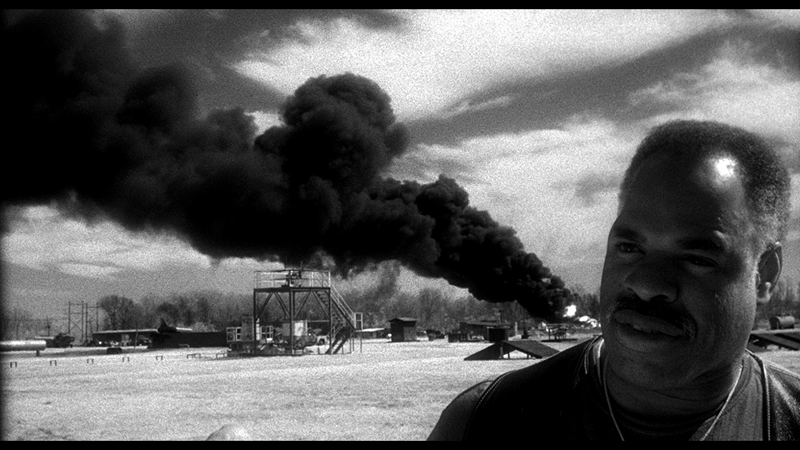
The Bottom Line
If someone unaware of the genius of Spalding Gray asked me which of his monologues they should try first, I would, without hesitation, suggest Gray's Anatomy, as it's Gray at his peak, teamed up with a visual artist working at the height of his creativity (there's a reason why the other film Soderbergh made at this point, Schizopolis, is also in the Collection.) Together, they made movie magic. Criterion has done a fine job of holding up their end of the bargain, offering an excellent presentation of the film, along with some solid extras. While it's a great intro for newcomers, for a Gray fan who missed the first release (or just wants to upgrade), it's a great chance to add two monologues to their collection, with some interesting bonus materials.
Francis Rizzo III is a native Long Islander, where he works in academia. In his spare time, he enjoys watching hockey, writing and spending time with his wife, daughter and puppy.Follow him on Twitter
*The Reviewer's Bias section is an attempt to help readers use the review to its best effect. By knowing where the reviewer's biases lie on the film's subject matter, one can read the review with the right mindset.
|
| Popular Reviews |
| Sponsored Links |
|
|
| Sponsored Links |
|
|
| Release List | Reviews | Shop | Newsletter | Forum | DVD Giveaways | Blu-Ray | Advertise |
|
Copyright 2024 DVDTalk.com All Rights Reserved. Legal Info, Privacy Policy, Terms of Use,
Manage Preferences,
Your Privacy Choices | |||||||









